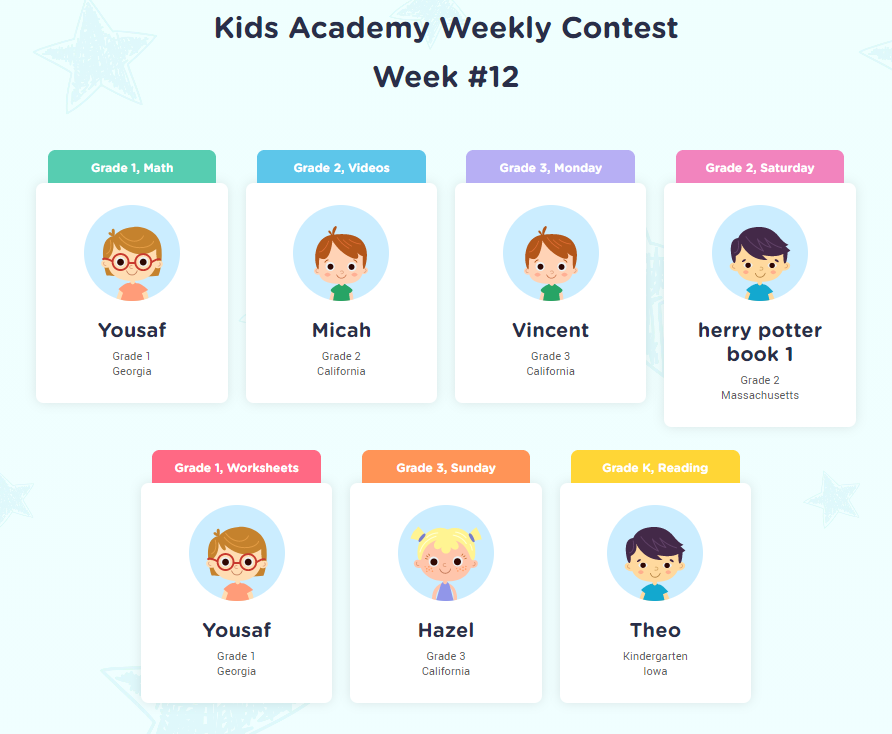Graph interpretation Math Worksheets for Ages 6-8
4 filtered results
-
From - To
Boost your child’s mathematical skills with our engaging Graph Interpretation Math Worksheets for ages 6-8! Designed to develop critical thinking and data analysis, these worksheets offer fun and interactive ways to interpret various types of graphs. Kids will learn to read bar charts, line graphs, and pictographs, gaining essential skills for future studies. Each worksheet provides clear instructions and vibrant graphics to keep students motivated and interested. Perfect for classroom or home use, these activities encourage hands-on learning and challenge young minds. Help your child unlock the exciting world of data with our expertly crafted worksheets from Kid's Academy!
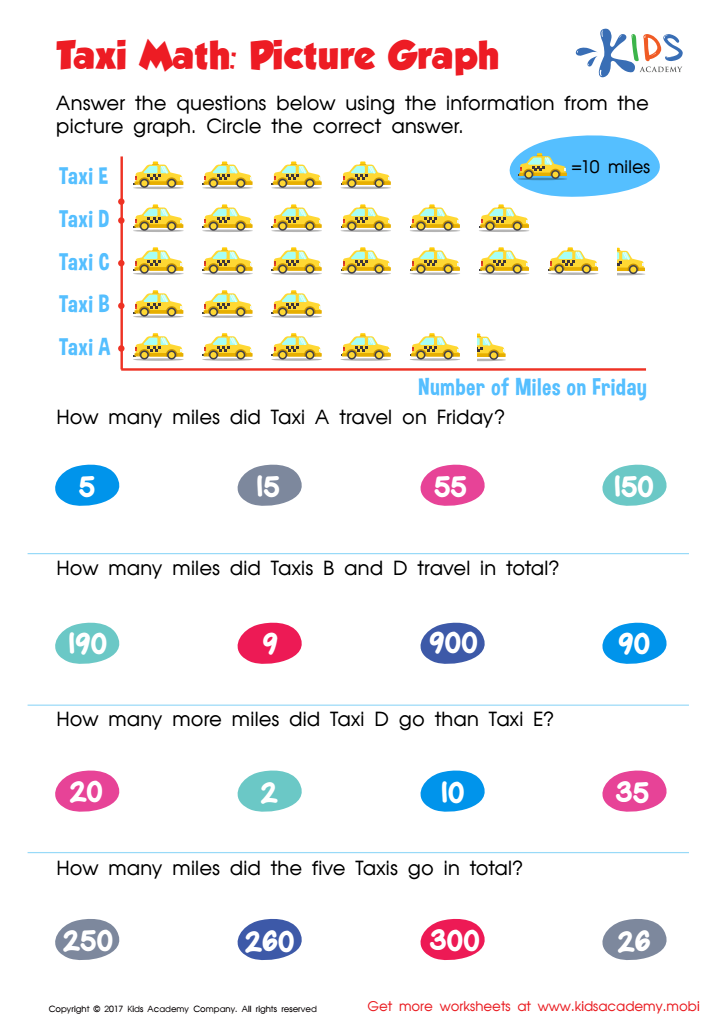

Taxi Math Worksheet
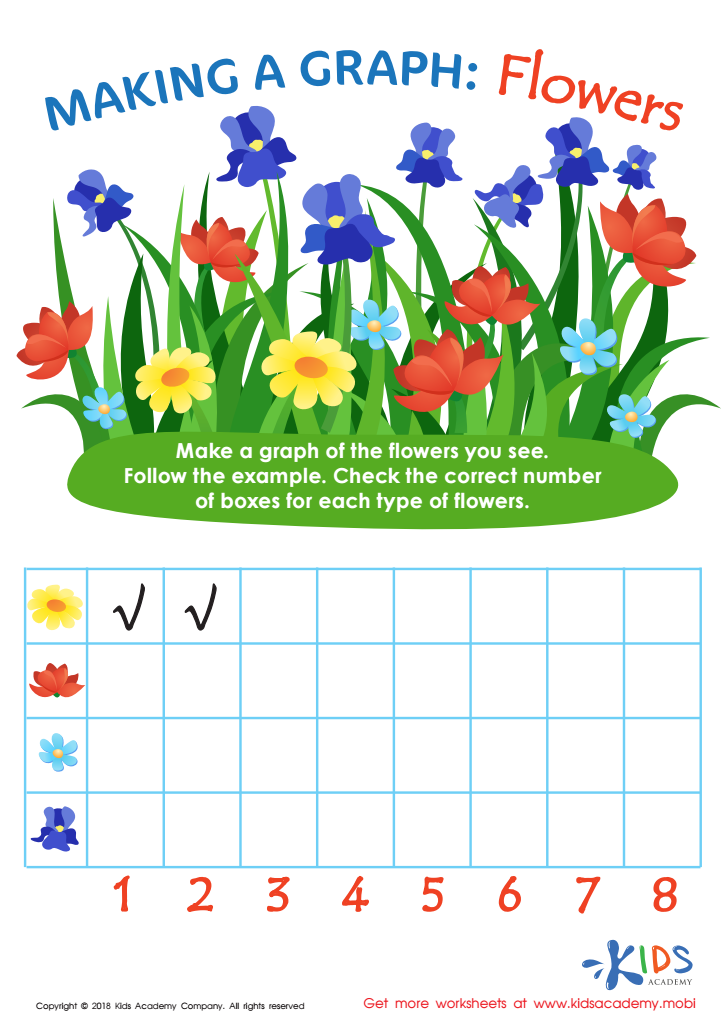

Making a Graph: Flowers Worksheet
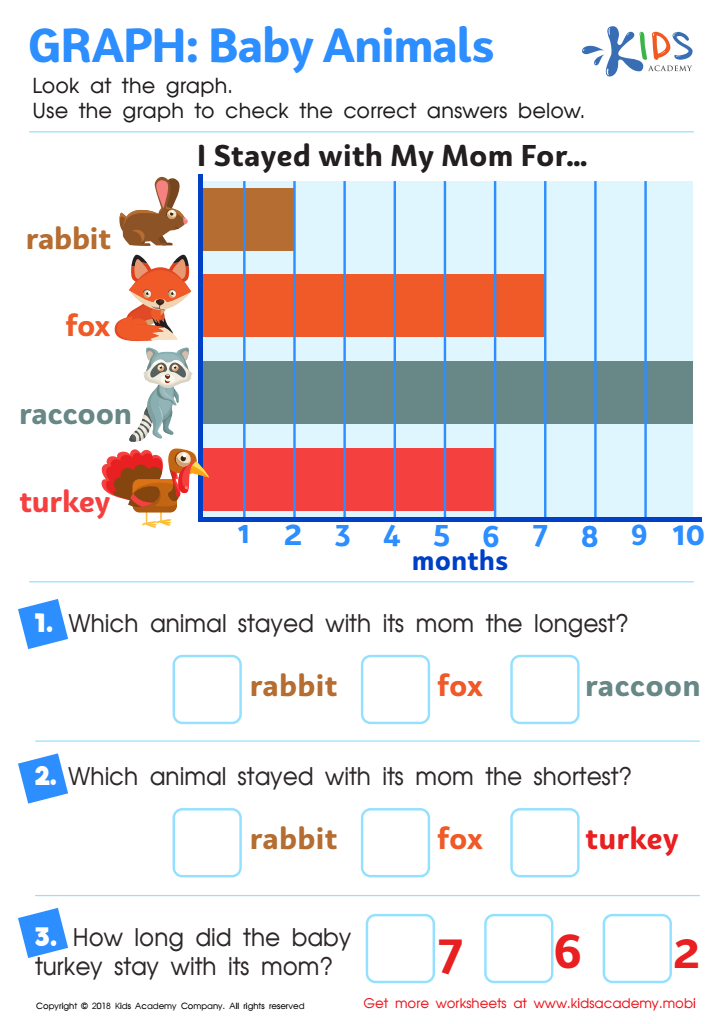

Graph: Baby Animals Worksheet
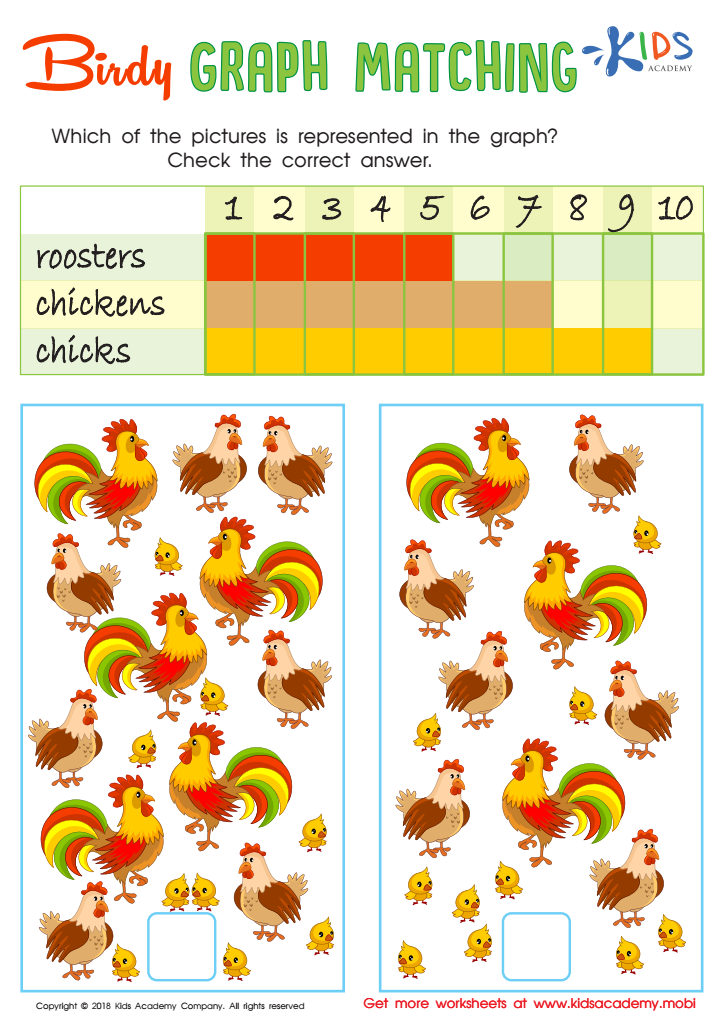

Birdy Graph Matching Worksheet
Graph interpretation skills are fundamental for children ages 6-8 because they form the cornerstone for understanding a wide range of mathematical concepts and real-world applications. Developing these skills early on can significantly enhance a child's cognitive abilities and prepare them for more complex mathematical tasks.
First, graph interpretation helps children understand and analyze data, enabling them to make sense of information visually. This skill is critical not only for math but also for subjects like science and social studies, where charts, graphs, and tables are commonly used. Mastery of this skill allows children to identify patterns, draw conclusions, and convey information in a more structured manner.
Second, learning to interpret graphs helps build critical thinking and problem-solving skills. Engaging with graphical data requires children to ask questions, compare categories, and think logically about relationships and trends. These cognitive tasks are essential for academic success and day-to-day decision-making.
Third, early exposure to graph interpretation can foster a positive attitude toward mathematics. Visualizing data can make abstract concepts more concrete, and thereby, more accessible and enjoyable for young learners. This can reduce math anxiety and boost confidence.
In a world increasingly driven by data, fostering strong graph interpretation skills in young children equips them with tools for lifelong learning and informed citizenship. Parents and teachers play a crucial role in nurturing these capabilities through guided exploration and hands-on activities.
 Assign to My Students
Assign to My Students






